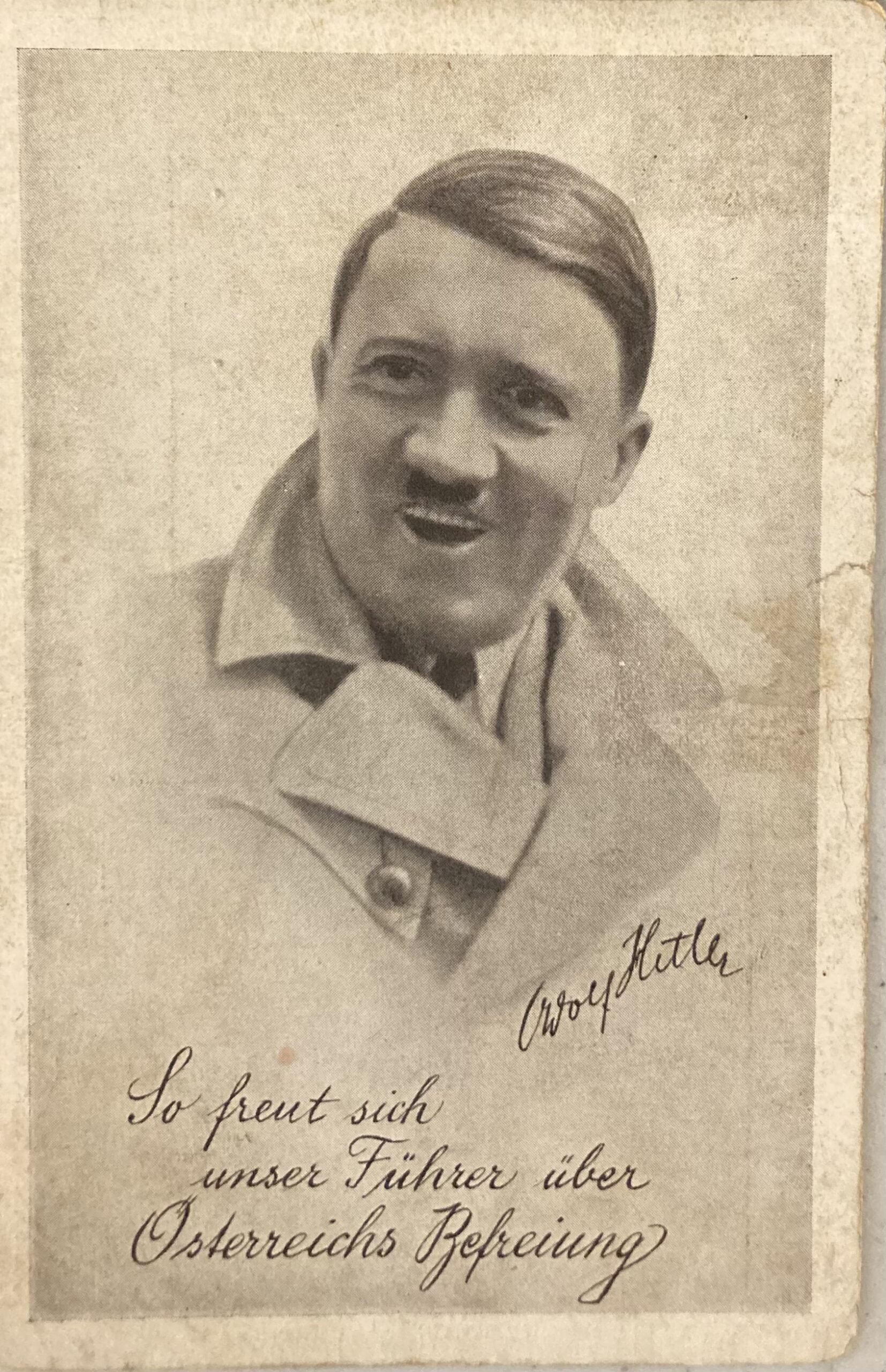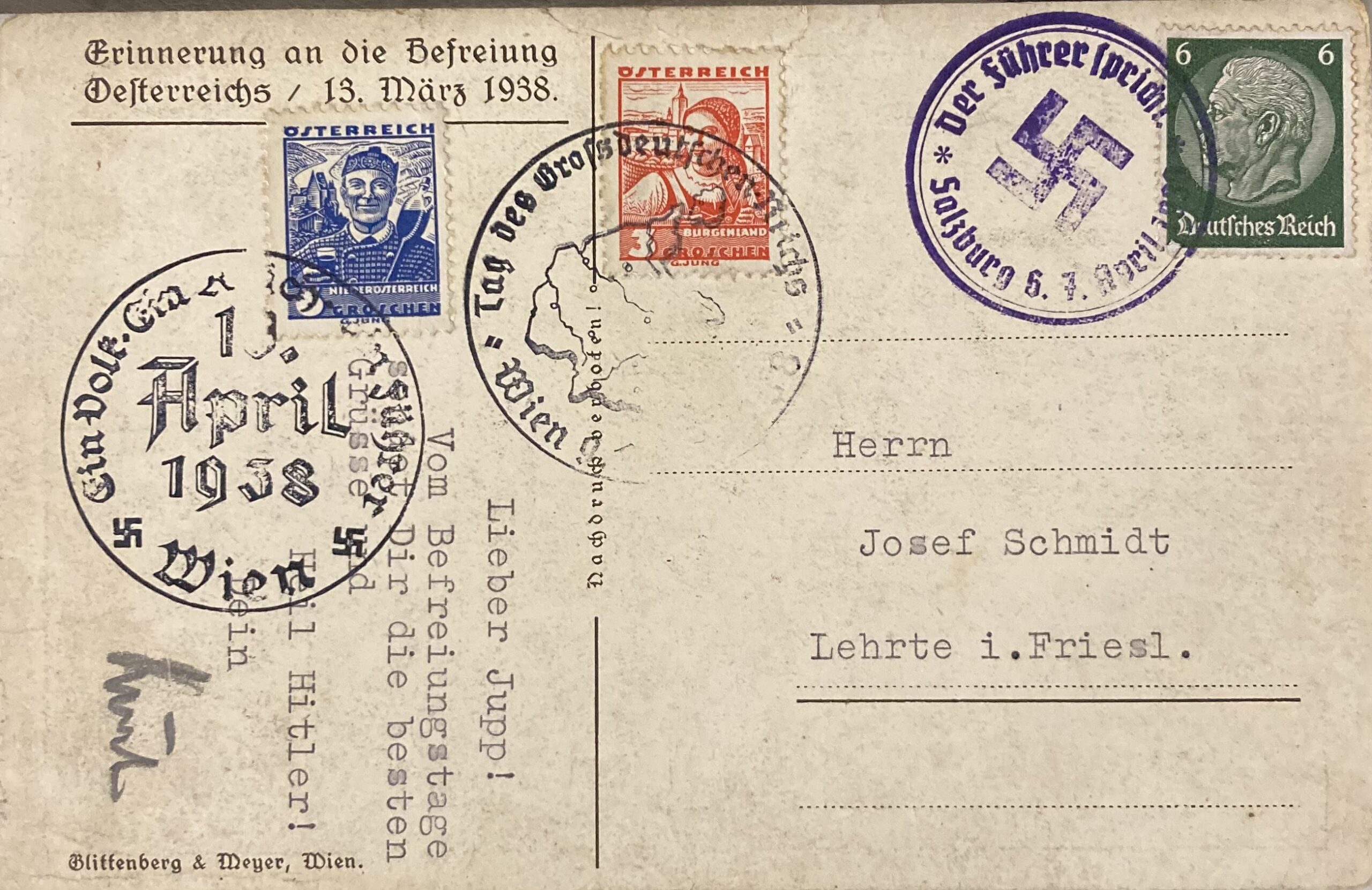Accession Number: 2022.02.4.25
Stamps: (left and middle): Vitner from Wachau, Lower Austria. Issued on August 15, 1934 (right) German Realm stamp used in Austria – Paul von Hindenburg (1847-1934), 2nd President. Issued on April 4, 1938.
Postmarks: (left) celebrates the date of the Austrian referendum to reunify with Germany (April 10, 1938), (middle) “Day of the German Reich”, (right) celebrates Hitler’s visit to Salzburg, Austria on April 6, 1938
Historical background:
The Anschluss was the annexation of the Federal State of Austria into the German Reich on 12 March 1938. When Adolf Hitler rose to power in Germany, desire for unification could be identified with the Nazis, for whom it was an integral part of the Nazi “Heim ins Reich” concept, which sought to incorporate as many Volksdeutsche (ethnic Germans outside Germany) as possible into a “Greater Germany”. Nazi Germany’s agents cultivated pro-unification tendencies in Austria, and sought to undermine the Austrian government.
In early 1938, under increasing pressure from pro-unification activists, Austrian chancellor Kurt Schuschnigg announced that there would be a referendum on a possible union with Germany versus maintaining Austria’s sovereignty to be held on 13 March. Portraying this as defying the popular will in Austria and Germany, Hitler threatened an invasion and secretly pressured Schuschnigg to resign. A day before the planned referendum, on 12 March, the Germans crossed the border into Austria, unopposed by the Austrian military. A referendum was held on 10 April, in which the ballot was not secret, and threats and coercion were employed to manipulate the vote, resulting in 99.7% approval for the Anschluss.
The campaign against the Jews began immediately after the Anschluss. They were driven through the streets of Vienna, their homes and shops were plundered. These events reached a climax in the Kristallnacht pogrom of 9–10 November 1938. All synagogues and prayer houses in Vienna were destroyed. Over 6,000 Jews were arrested overnight, the majority deported to Dachau concentration camp in the following days.
Allied-occupied Austria declared independence from Nazi Germany on April 27, 1945.


